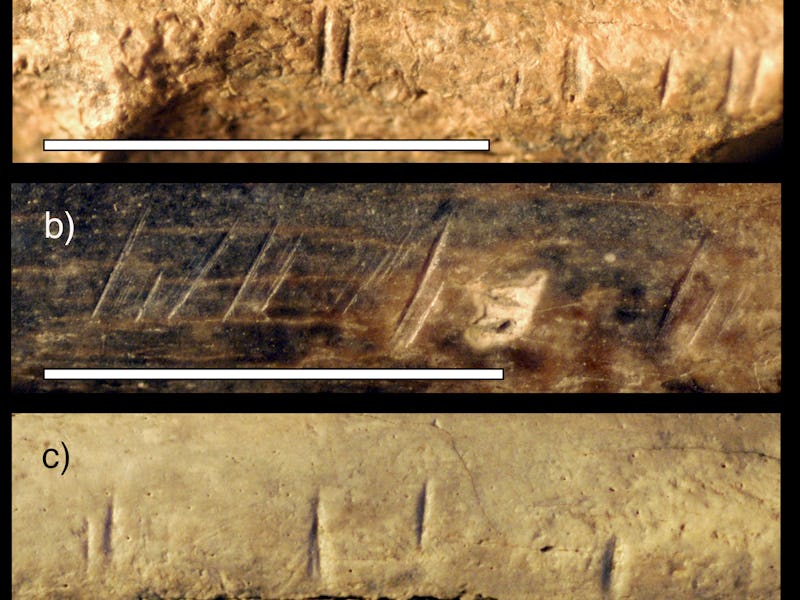This Million-Year-Old Bone May Reveal an Ancient Human Cannibal
Markings on a prehistoric human bone point to potential cannibalism.

Dining on our own species is something that likely brings shrivers up most people’s spines. But according to a new study, some of our evolutionary ancestors millions of years ago may have partaken in this unthinkable dietary practice.
Published Monday in the journal Scientific Reports, researchers at the Smithsonian’s National Museum of Natural History reexamined a 1.45-million-year-old shin bone discovered in Kenya in 1970 and found cut marks etched on the fossil were from carving up human flesh, although what happened beyond that is unclear. Particularly, it’s unclear which of our humanoid ancestors was doing the butchering and which hominin species the shin bone belonged to.
“We just know that some tool-wielding hominin came and cut [the] meat off of that bone,” Briana Pobiner, the paper’s co-author and a paleoanthropologist at the National Museum of Natural History, told Smithsonian Magazine. “The most plausible explanation is that they did that to eat it.”
View the hominin tibia and magnified area showing cut marks; the scale is four centimeters.
Pobiner, who studies the evolution of the human diet, originally studied the fossilized tibia — gathering dust in Kenya’s Nairobi National Museum – to understand how ancient animals preyed upon our ancestors, believing the cut marks were from a predator or scavenger.
But a 3D analysis of the cut marks, 11 in total, conducted by co-authors Michael Pante of Colorado State University and Trevor Keevil of Purdue University revealed nine of the marks were the result of stone tools early humans would have been capable of creating and using.
Two other marks appear to be animal in origin, specifically a large cat saber-toothed in appearance related to present-day lions. Having these animal bites in the mix suggest multiple whodunit theories. The shin bone’s owner might have been killed by a large cat who chewed on the leg for a bit. It could also have been some ancient hominins who did the killing and butchering, with the big cat scavenging whatever was left on the bones.
However it happened, these findings add to the body of archaeological evidence pointing to cannibalism’s prehistoric practice among our ancestors, despite the fact that we’re actually not all that nutritious. For example, Neanderthal remains in Europe suggest that our heavy-browed cousins resorted to munching on the forbidden Chicken of the Sea to survive during lean times.
“It’s interesting to think,” said Pobiner, “about how long our ancestors and relatives have been seeing other people as potential food.”
This article was originally published on